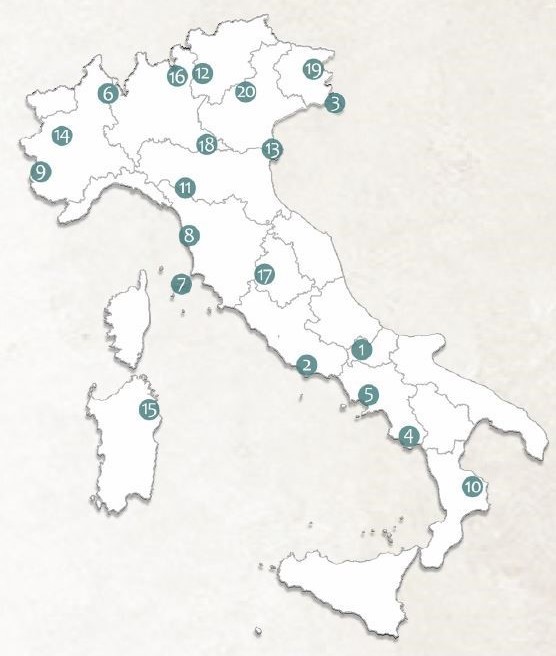The Italian Network of Biosphere Reserves
The first Biosphere Reserves in Italy date back to the late 1970s. Over the years, the number of Biosphere Reserves has increased, especially following the adoption of the Seville Strategy, which gave a strong impetus to this recognition, having also partly changed the very concept of Biosphere Reserve by positioning it as a laboratory for sustainable development.
However, it was with the establishment of the Italian MAB National Technical Committee in 2011 that the largest increase in recognised territories took place. Today there are 201 of them, distributed throughout Italy, representing very different ecosystems and communities, united by the desire to protect their territory and contribute to the global challenges of sustainability.
- Collemeluccio-Montedimezzo Alto Molise (Molise) 1977
- Circeo (Lazio) 1977
- Miramare and Trieste coastline (Friuli Venezia Giulia) 1979
- Cilento and Vallo di Diano (Campania) 1997
- Somma-Vesuvio and Miglio d’Oro (Campania) 1997
- Ticino, Val Grande Verbano (Lombardia/Piemonte) 2002
- Tuscan Islands (Toscana) 2003
- Tuscan coastal forests (Toscana) 2004
- Monviso (Piemonte) 2013
- Sila (Calabria) 2014
- Tuscan-Emilian Apennines (Toscana - Emilia) 2015
- Ledrensi and Judicaria Alps (Trentino-Alto Adige) 2015
- Po Delta (Emilia-Romagna - Veneto) 2015
- Po Hill (Piemonte) 2016
- Tepilora, Rio Posada and Montalbo (Sardegna) 2017
- Valle Camonica-Alto Sebino (Lombardia) 2018
- Monte Peglia (Umbria) 2018
- Po Grande (Lombardia – Emilia-Romagna) 2019
- Julian Alps (Friuli Venezia Giulia) 2019
- Monte Grappa (Veneto) 2021

